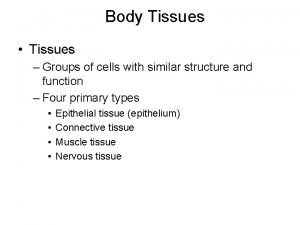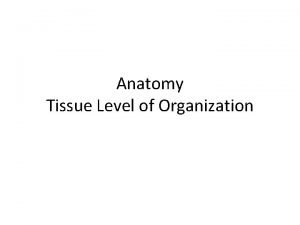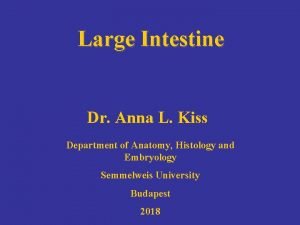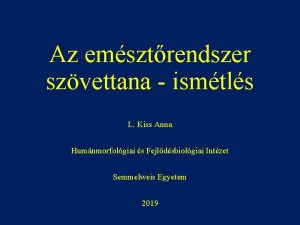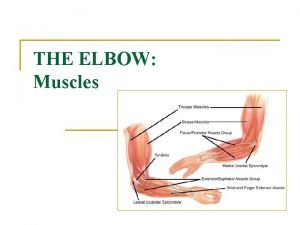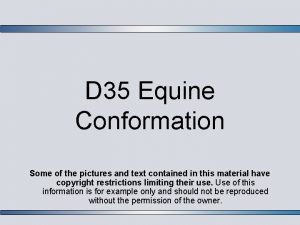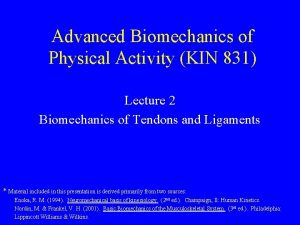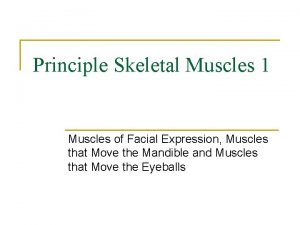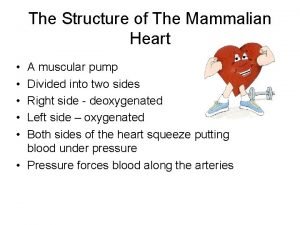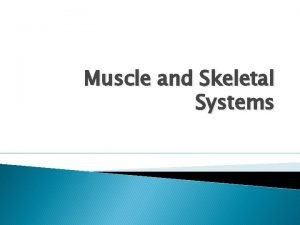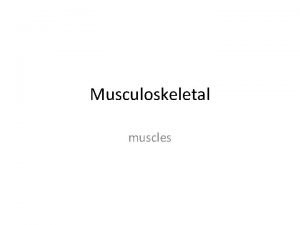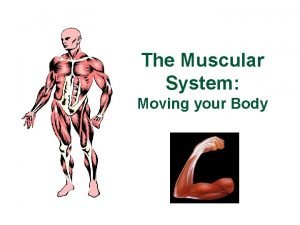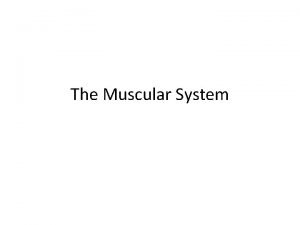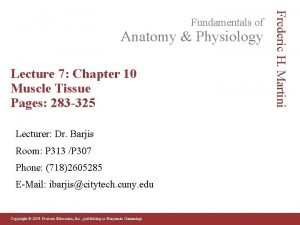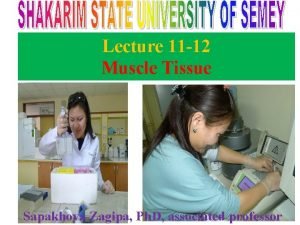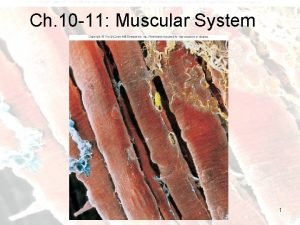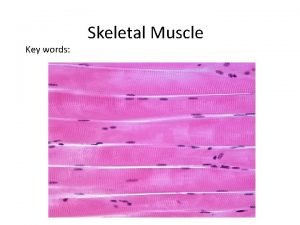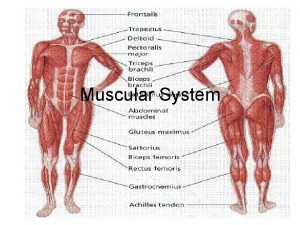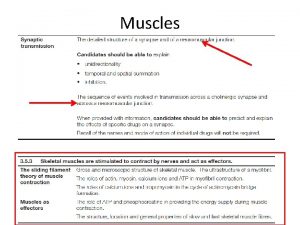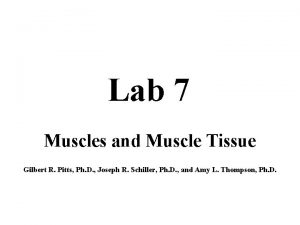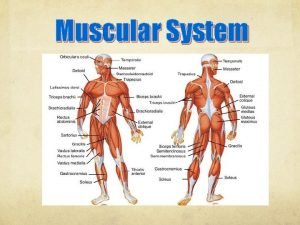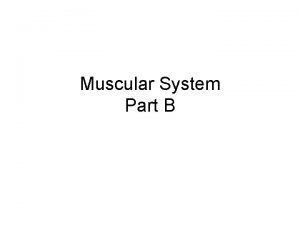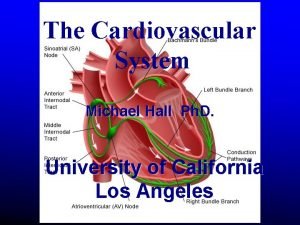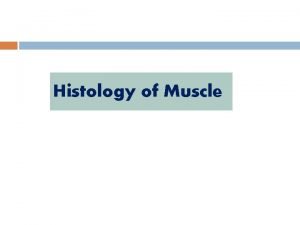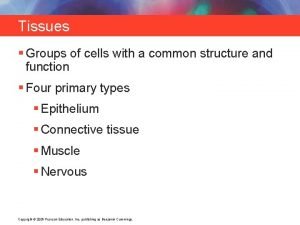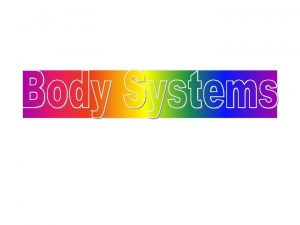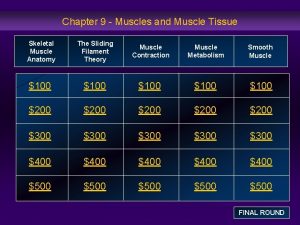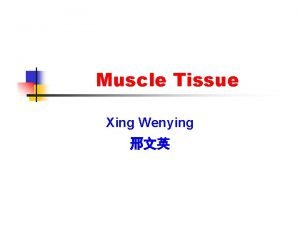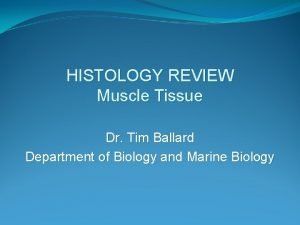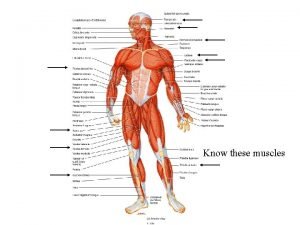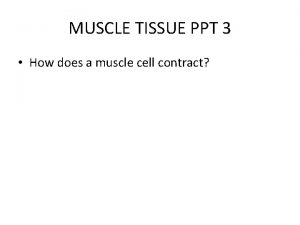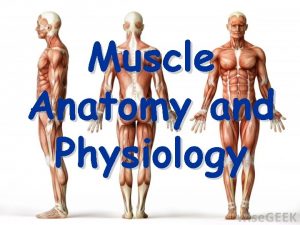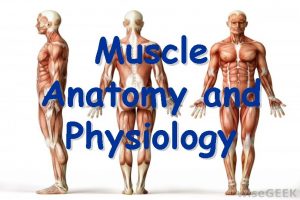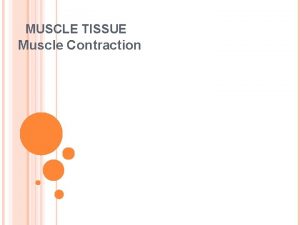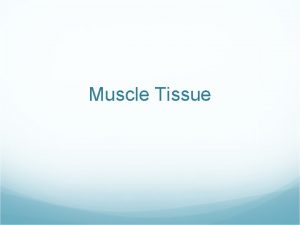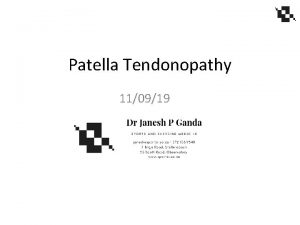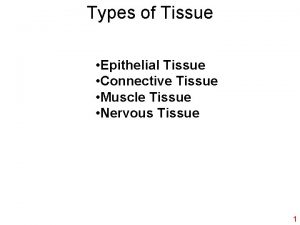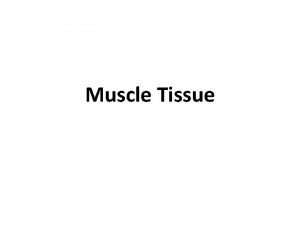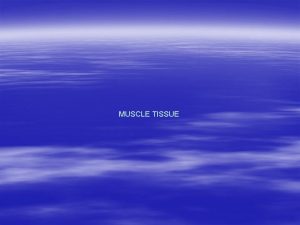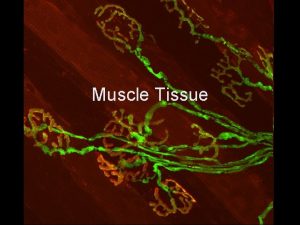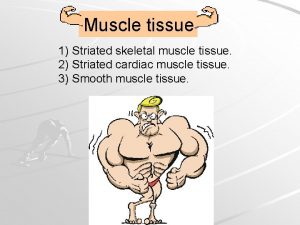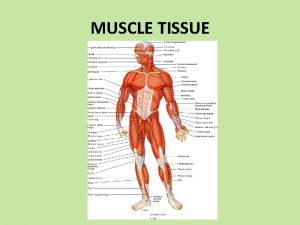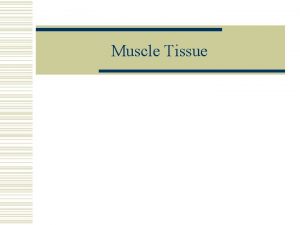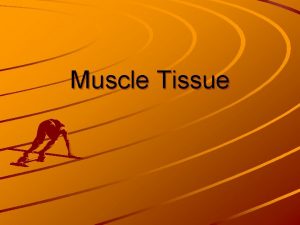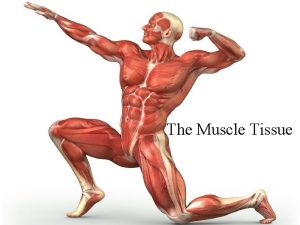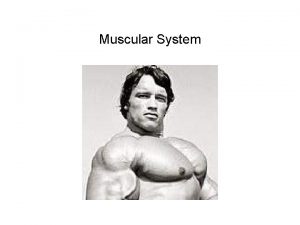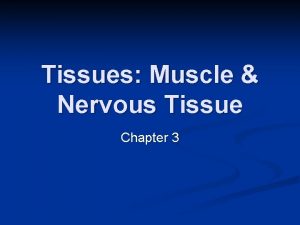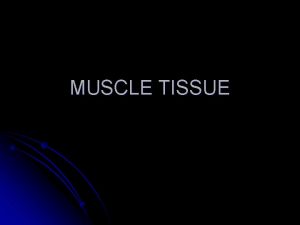Muscle muscle tissue tendons Dr Anna L Kiss

































- Slides: 33

Muscle, muscle tissue tendons Dr. Anna L. Kiss Department of Anatomy, Histology and Embryology Semmelweis University Budapest 2018

General myology Musculature: actíve component of the movement Structure: striated muscle (skeletal) tendons: dense connective tissue sheath: fascia (epimysium)

Muscle tissue • Smooth muscle • Stiated muscle • Cardiac muscle Function: contraction Origin: mesoderm Structure: cells or „fibers”

Smooth muscle • phylogenetically the most ancient type • spindle shaped cells • slow, non-synchronized, unvoluntary contraction • actin and myosin are NOT arranged in registers • internal organs wall

Smooth muscle Nucleus: in the middle of the cells

Smooth muscle thick filaments: myosin thin fialments: actin dense bodies: to help the contraction

Contraction of smooth muscle

Smooth muscle contraction For the contraction: Ca ion: caveolae Ca-binding protein: calmodulin Contractile protein: actin+myosin ATP

Striated(skeletal) muscle

Striated muscle: a. ) skeletal b. ) visceral c. ) cardiac Structure: muscle fibers: multinucleated giant cells (syncitium: fusion of the embryonic myoblasts) lenght: > 30 cm diameter: 10 -100 µm

Skeletal muscle

Electron Microscopic picture Sarcomere: functional unit

Structural unit of the striated muscle: sarcomera Muscle fibers myofilaments: contractile proteins: actin and myosin regularly arranged cross striation

Sarcomere during contraction

Skeletal muscle

Contractile proteins Thin filaments Myosin head: actin binding site + ATP binding thick filaments

Sarcomere

mysosine head mysosine binding site


For the contraction of the skeletal muscle: • • contractile proteins: actin and myosin Ca 2+ (stored in s. ER) impulse transfer from the sarcoplasm to s. ER-re (triads) ATP (directly from kreatin phosphate, 20 mmól/kg) aerob (biological oxidation) glikogén anaerob (fermentation) • mitochondria • oxigen (myoglobin + haemoglobin)

Triád: a. ) voltage-gated Ca 2+ channels: T-tubules (transverse) SR ciszterna Ca 2+ outflow b. ) Ca 2+ -ATP-ase Ca 2+ back to the SER

Types of the skeletal muscle size diameter contraction color fat in the cytoplasm glycogen in the cytoplasm resistancy „red” muscle „white” muscle small large fibers slow dark (red) numorou s numorous fewer bigger fast light (white) few fewer larger amount smaller

Cardiac muscle

Cardiac muscle • cells (bifurcation; X or Y shaped branching ce • cross striation: actin and myosin are in register • nucleus is in the middle of the cells • intercalated disc (Eberth’s line – junctions) • lots of capillaries • lipofuscin by aging

Cardiac muscle Intercalated disc: • special junctions between cells • fast impulse cinduction

Intercalated disc (Eberth’s line) • fascia adherens • desmosoma • gap junction (nexus)

Cardiac muscle

Fine structure of the cardiac muscle • diad • large amount of mitochondria

impulse condacting cells: Purkinje cells non-differentiated muscle cells!!

proximal end: origin belly distal end: insertion tendon

Structure of the tendon sheath a. ) outer, fibrous layer b. ) inner, synovial layer mesotendon

Muscle • shape: spindle, triangular, quadrangular, flat • venter (belly), caput (head), tendineous intersection, aponeurosis, • unipennatus, bipennatus,

spindle biceps unipennate bipennate
 Similar pictures
Similar pictures What type of connective tissue are tendons and ligaments
What type of connective tissue are tendons and ligaments Lanz point
Lanz point Submucosa
Submucosa Anconeus
Anconeus Bad horse conformation pictures
Bad horse conformation pictures Knee muscle anatomy
Knee muscle anatomy Ligament
Ligament Orbicularis oculi origin and insertion
Orbicularis oculi origin and insertion Diagram of heart with labelling
Diagram of heart with labelling Youtube.com
Youtube.com Perforation plates
Perforation plates Types of muscle tissue
Types of muscle tissue Types of muscle tissue
Types of muscle tissue Four basic tissues
Four basic tissues Sarcomere
Sarcomere Muscle tissue
Muscle tissue Properties of heart muscle
Properties of heart muscle Skeletal muscle tissue structure
Skeletal muscle tissue structure Skeletal muscle tissue description
Skeletal muscle tissue description Types of muscle tissue
Types of muscle tissue What makes up muscle tissue
What makes up muscle tissue Muscle tissue
Muscle tissue Tissue that connects muscle to bone
Tissue that connects muscle to bone Smooth muscle gap junctions
Smooth muscle gap junctions Muscle tissue
Muscle tissue Characteristics of skeletal smooth and cardiac muscle
Characteristics of skeletal smooth and cardiac muscle Groups of cells with a common structure and function.
Groups of cells with a common structure and function. Muscle tissue parts
Muscle tissue parts Muscles and muscle tissue chapter 9
Muscles and muscle tissue chapter 9 Smooth muscle
Smooth muscle Skeletal muscle tissue 40x
Skeletal muscle tissue 40x Structural proteins in muscle
Structural proteins in muscle Tropomyosin muscle contraction
Tropomyosin muscle contraction
